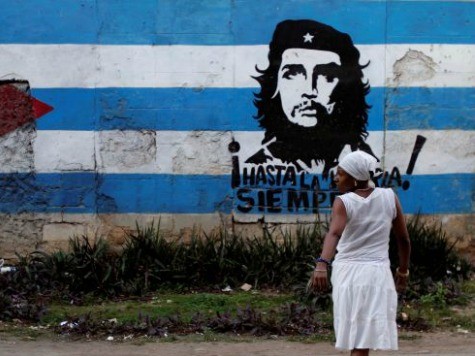Weeks after Nelson Mandela’s death rekindled a false admiration among some on the left for the racial equality of Fidel Castro’s Cuba, the Wall Street Journal‘s Mary Anastasia O’Grady comes out swinging at the myth that Afro-Cubans are better off under communism.
O’Grady notes that 2009 estimates place the black or mixed population between 60% and 70% of Cuba’s citizens, but there are no officials of color in the upper echelons of Cuban leadership. The torture and humiliation Afro-Cuban dissidents face upon being arrested is often exacerbated by their skin color.
Using the example of political prisoner Eusebio Peñalver–who was in Castro’s gulags longer than Mandela toiled in prison–O’Grady notes that, according to all fair accounts of his prison sentence, “it is clear that he suffered more because he was black.” Other white prisoners observed that his torture was more severe, because, according to O’Grady, he “interfered with Castro’s narrative” of racial equality. That suffering, according to his personal account, included being forced to “eat grass, [being] submerged in sewage,” and extensive beatings. Peñalver died in prison to little fanfare, while Castro’s ally Mandela became an international icon despite condoning Peñalver’s death through silence.
O’Grady’s article is a cursory look at how Castro’s Cuba violates the human rights of its Afro-Cuban citizens and keeps them oppressed and removed from power, framed in the context of support for Nelson Mandela. She also notes that any Afro-Cubans who attempt to make their concerns about racial equality on the island public have been met with imposed silence. The piece works because of the emotional powerhouse that is Mandela’s story, and the contrast between the image of Mandela and the work of his allies to oppress the black population of Cuba, while sending thousands to die for the imperialist cause of intervention in Angola.
O’Grady is generous in not diving too deeply into the lives of other political prisoners, even as Peñalver’s story so acutely details that savagery. She also gives only a surface introduction to the everyday segregation of poorer, blacker Cubans from tourist neighborhoods. For example, O’Grady does not mention more prominent modern dissidents like Guillermo Fariñas, survivor of 24 hunger strikes and Sakharov Prize winner who toured America warning of fragmentation in the dissident movement. Also left out of the profile is Jorge Luis García Pérez, known as Antúnez, who served 17 years in prison and openly denounced the racism pervasive in Cuba’s penal subcolony once released into the general population.
The Cuban opposition movement in recent years has striven to emphasize the racism pervasive in the communist regime. Dissident Manuel Cuesta Morua spoke out at a Miami event in May about the “grave problem” of white Cubans often subsisting on the money sent to them by their family in exile, while Afro-Cubans–many of whom stayed in Cuba because of Castro’s promises of racial equality–find their daily bread a Herculean task to acquire. “Today, no one in Cuba can deny that we have a serious racial problem,” he argued.
For many of those Afro-Cubans struggling to eat, or suffering even more deeply than their white counterparts in prison, racism just adds to the suffering of living in Cuba’s Communist system.

COMMENTS
Please let us know if you're having issues with commenting.